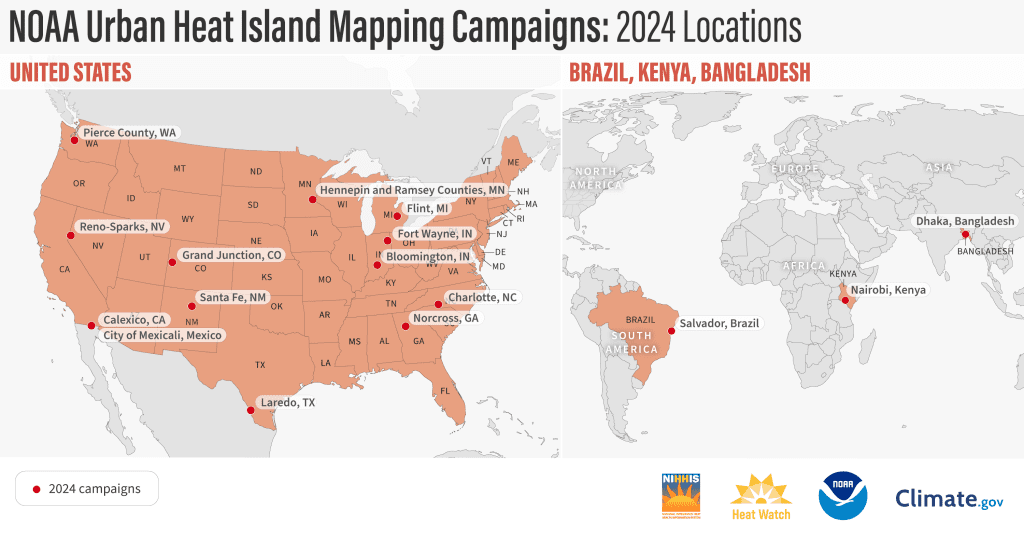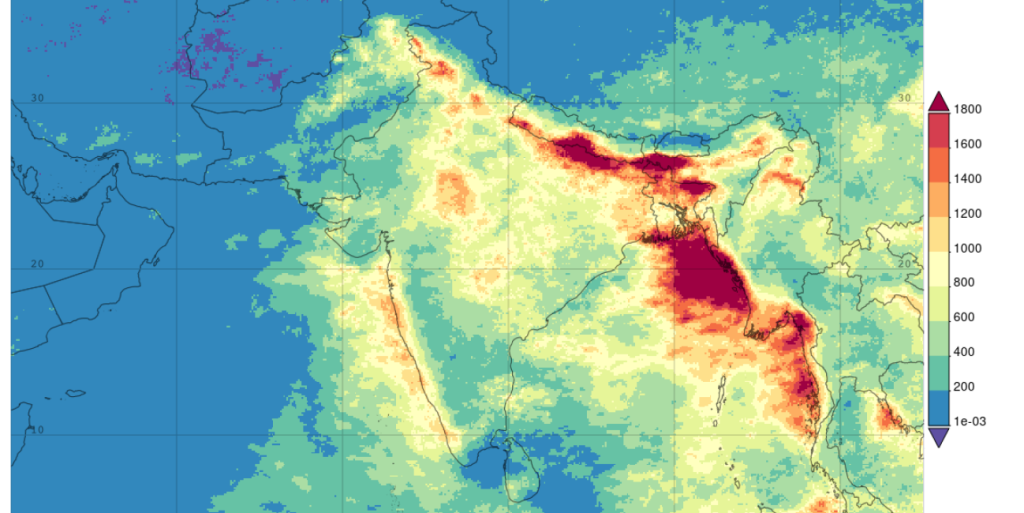What are the competition ID numbers for the RISA competitions?
Competition 1 - Upper Northeast: 3195957
Competition 2 - Southeast: 3188118
Will the informational webinars highlighting the NOFO be recorded and made available online?
Yes, the webinars will be recorded and posted here.
Letters of Intent
Is there any way we can submit a LOI if we miss the deadline?
Once the LOI deadline has passed, LOIs cannot be submitted. If you still have questions, you can send questions to oar.cpo.risa@noaa.gov or sign up for office hours.
Can we submit a proposal despite not having submitted an LOI?
LOIs are not a requirement, so you can still submit a proposal without going through the LOI stage. We would encourage you to view our webinar slides and recording at https://cpo.noaa.gov/grants/
We understand that the LOI should be no more than two pages in length. Will a cover page and preliminary budget information sheet be counted as the two pages limitation?
The LOI should not have a cover/title page. The instructions for and information that needs to be included in the LOI is listed in the NOFO in section I.V.B.I.
Team / Investigators
Are applicants allowed to change/add investigators and/or institutions to the proposed teams after submitting an LOI to competition 1 or 2?
Yes, after the LOI stage, you may still add or take out investigators or institutions. We recognize that you may not have had time before the LOI deadline to assemble your full team.
Can a person be a principal investigator (PI) on more than one CAP team?
Yes, but it is important to articulate how one will be positioned to handle the work associated with that commitment and what the role is of the investigator that warrants being on more than one proposal.
Is there a limit on the number of Co-PIs a team can have?
There is no limit. You just want to have a manageable team.
Is it possible for various faculty from one university to be on different, competing “teams” either with members within this university or in other combinations with others from other universities or agencies? I am trying to determine if this is indeed a limited call for our university, that is, only one team from our university can submit a proposal.
Researchers from one university may participate in multiple proposals, and one university could be on multiple proposals (e.g. as a lead institution and as an affiliate). However, given the scope and scale of CAP proposals, we encourage you to use the LOI phase to make informed decisions about the merits of submitting multiple proposals.
Can a non-profit organization serve as a lead institution or sub-awardee?
Yes.
Will you accept (what do you think of?) non-academics as co-PIs on proposals?
Yes. While the leads have often been academic researchers, we would consider and encourage all eligible institution types listed in the Notice of Funding Opportunity.
Is a federal center or laboratory (e.g. DOE national lab) eligible to participate in the RISA team?
Yes, but note that we cannot support federal salaries.
Does an institution have to be located in the region?
It's not a Yes or No question. In the past, proposals from institutions well outside the region of interest have been scrutinized by reviewers. Context matters, including just how far team members are from the region, whether there is a track record of engagement in and research on the region in question, what institutional partners are in the region, and whether team members would be seen as an outsider. Congress strongly encourages us to ensure CAP teams are managed, staffed, and based at institutions within the region served, but institutions outside the region continue to be legally eligible.
Prior Research
What is the difference between the “prior research” and “current and pending research” sections?
Results from prior research may include any relevant research. This section is not limited to NOAA-funded grants. This section is used to understand the relevance of the team's experience to the competition. The current and pending support section is limited to federal support. The purpose of this section is to assess what projects could be leveraged, whether investigators are overcommitted, and whether federal projects are being duplicated.
Budget / Funding
Matching funds are not required. But it will be allowed. Is that correct?
You are allowed to have matching funds provided. However, matching funds are not required.
Can applicants include a small stipend based on the days of participation to be paid to stakeholders who will participate in the team’s workshops? Would these be considered as participant costs in the proposal?
Yes, Applicants can include a small stipend (Participant Support Cost) for participants in connections to a conference/Workshop/training). BUT ONLY If the participants are considered essential in completing the objective of the project. Make sure in the budget justification that they detail why the participants are there and how valuable their input is during the workshop. Participant support costs can be stipends, travel allowance, registration fee, and subsistence allowance.
Does NOAA have salary caps on grant funding as does the Department of Health and Human Services?
There is no salary cap. The salary will be reviewed by the grants management division to determine if it is reasonable and allowable.
If submitting a proposal with a sub-award, do we need to submit separate forms for the sub-award recipient?
Yes. If you are going to be providing funds to a sub-awardee, you will need to get the federal forms (SF424, SF424A), separate budget table and narrative from the recipient and include in your application package.
Miscellaneous
Can you please outline how the review panel will be selected. What will be the general composition of the review panel?
We have a set of technical reviewers and relevance reviewers. It will be a diverse group with a mix of skills, disciplines, perspectives, geographies, and sector backgrounds who understand the basics of co-production of actionable knowledge. Panelists will be screened for conflicts of interest.
Is there information available on past CAP/RISA awardees or successful proposals?
The CAP/RISA website includes links to currently funded team websites, which maintain updated information about implemented projects. See https://cpo.noaa.gov/CAP-RISA
Can we provide research and tools that relate to weather (i.e. short term events) as well as to climate (i.e. longer term conditions)?
Our office is interested in supporting work that connects weather to climate but be sure to make the climate connection for the review process.
In addition to a letter of endorsement from the lead PI’s institution, can we get letters of collaboration from stakeholders? Do you have instructions on those letters? Do you have a limit on the number of letters we can include in a proposal?
Letters of support are not required. However, up to 10 letters may be submitted and can be used to supplement information included in the full proposal if submitted as part of the application. Letters will be taken into consideration when evaluating the proposal generally and the proposed partnerships specifically. When deciding who to gather letters of support from, consider the centrality of the partner’s role in the project and the relevance of justice, equity, diversity, and inclusion. The letters supplement the reviewers’ understanding from the full proposal, so letters are particularly useful where they provide a sense of the prior relationship or level of interest from critical and/or nontraditional partners. In situations where partners represent underserved communities, letters indicate the community’s willingness and choice to engage.
Where should Letters of Support be included in the proposal document?
The letters of support can be placed anywhere after the appendices. In grants.gov, they can be included in the other documents section for uploading. There are no strict guidelines for placement of the letters. You can include an appendix for other tables as you list.
Competitions 1 & 2 Questions
Budget / Funding
Will there only be one award per region or will you consider multiple awards if you have two strong proposals from the same region?
The CAP program can fund only one award per region. The number of regions that can be funded is contingent on the program budget, but geographic coverage is an important national priority.
How should applicants fill out the SF424A NOAA budget forms for a 5- year CAP proposal?
Complete years 1 through 4 on the first SF-424A. Year 5 will go on the second SF-424A. In addition, in the last column of the second SF-424A, you would insert the totals for each row from all the categories covering all 5 years (1-4 from the first SF-424A and year 5 from the second SF-424A). The totals should be derived from the line item categories, in section B. The categories are travel, personnel, etc.
Would NOAA be willing to make a CAP grant/cooperative agreement with two universities in a region (e.g., in the case of a collaborative/joint/equally-shared proposal)?
Financially, NOAA has to select one institutional award for each region, but the funds can be distributed equally with other universities through subawards.
We plan to compete for one CAP team in the {specific region}. However, we might have team members from another region. Is that allowed (cross regions team members)?
The idea of a CAP team is to be resident in the region for building trust and collaborations. If you do choose to include an investigator(s)/researcher from outside the region, you will need to provide adequate justification for why you are doing so as opposed to finding that expertise in the region.
Scope Questions
Can we propose work in an adjacent CAP region [in addition to the primary proposal region]? Would we need to negotiate with the existing team or an applicant in that region?
If an applicant wants to propose work that includes part of an adjacent state/region, you are encouraged to coordinate with the CAP team already covering that state/region if possible. We have seen this expressed as letters of support. Please see the Program Information Sheet for more information about the expectations of coverage across geographic regions
What should be the balance between research and products? For example, say a set of users want a seasonal forecast of a climate parameter that is currently not available from suppliers because it requires research to develop. Our CAP team then carries out the research to develop the product. Can the CAP team now also take charge of regularly disseminating the new product through a website, forums, etc.? Or should we hope that the research findings will be disseminated to forecast suppliers (public and private) and they will start disseminating?
We encourage CAP teams to develop and disseminate products that combine social and physical/natural science information to enhance planning for the region, particularly where the products serve a purpose in investigating an overarching research question on the use of climate information. For applicants proposing to develop outlook products and forums as part of developing and maintaining an engagement strategy and as part of research on what constitutes timely and credible information, we encourage them to also look for ways to transition those products to operational partners.
Can applicants work on drought and if so, what are the parameters?
For CAP core funding, applicants can propose work on multiple stressor climate impacts to society in which drought is one of many drivers. The societal ramifications of long term drought coupled with other concurrent and/or combined physical and/or social events, trends, or projections are within the scope of the competition. CAP core funds should be used for multiple stressors (combined physical and social) in which drought is one of many drivers of risk. CAP is not supporting work on drought as a sole driver. Work on regional drought early warning systems (RDEWS) and the indicators, forecasts, impact assessments, monitoring, and state, federal and local planning and convening needed to enhance preparedness to short-term drought is funded by CPO’s National Integrated Drought Information System (NIDIS).




